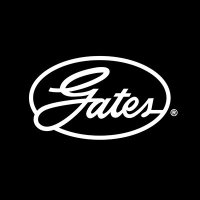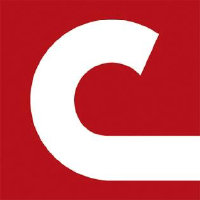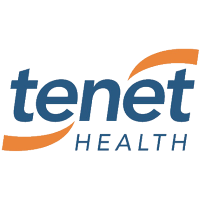
GDI Integrated Facility Services Inc
TSX:GDI

Earnings Call Analysis
 Summary
Q2-2023
Summary
Q2-2023
In Q2 2023, GDI Integrated Facility Services reported a robust revenue growth of 16%, reaching $609 million, propelled by a strong 12% organic growth. However, adjusted EBITDA decreased by 11% to $34 million. Year-to-date figures show an 18% revenue jump to $1.2 billion, with an EBITDA drop of 9%. The Canadian Business Services struggled with a margin decrease, likely ending with EBITDA stabilizing around 8-9%. The US Business Services maintained EBITDA, and the Technical Service segment saw a 33% surge, indicating a positive future with a near-record backlog. Overall, the company expects growth and margin stability in the second half of the year as working capital management and spending strategies improve.





























 You don't have any saved screeners yet
You don't have any saved screeners yet

Good morning, ladies and gentlemen, and welcome to the GDI Integrated Facility Services, Inc. Second Quarter 2023 Results Conference Call. [Operator Instructions]. This call is being recorded on Wednesday, August 9, 2023.
I would now like to turn the conference over to Stephane Lavigne. Please go ahead.
Thank you, operator. Good morning, all, and welcome to GDI's conference call to discuss our results for the second quarter of fiscal 2023. My name is Stephane Lavigne. I'm Senior Vice President and Chief Financial Officer of GDI. I'm with Claude Bigras, President and CEO of GDI; and David Hinchey, Executive VP of Corporate Development.
Before we begin, I would like to make you aware that this call contains forward-looking information and we ask listeners to refer to the full description of the forward-looking safe harbor provision that is fully described at the beginning in the MD&A filed on SEDAR at the end of last night.
I will begin the call with an overview of GDI's financial results for the second quarter of fiscal '23. And then I will invite Claude to provide his comments on the business. In the second quarter, GDI recorded revenue of $609 million, an increase of $83 million or 16% over Q2 of last year, which is mainly due to organic growth of 12%. We recorded an adjusted EBITDA of $34 million in the quarter, a decrease of $4 million or 11% over Q2 of last year.
On a year-to-date basis, revenue increased by $179 million, or 18%, to reach $1.2 billion compared to $1 billion last year. Organic growth was 13% year-over-year, and revenue growth from acquisition was 2%. Adjusted EBITDA in the first half amounted to $67 million, a decrease of $7 million, or 9%, over the corresponding period of 2022.
Now moving to our business segments. Our Business Services Canada segment recorded revenue of $144 million in Q2, a decrease of $1 million or 1% compared to the second quarter of 2022. This segment reported an adjusted EBITDA of $13 million compared to $19 million in the second quarter of 2022, representing a decrease of $6 million. Our Business Services USA segment recorded revenue of $180 million in Q2, representing an increase of $16 million when compared to Q2 of 2022, mainly attributable to the Cascadian acquisition in August 2022 and the appreciation of the U.S. dollar relative to the Canadian dollar.
This segment reported adjusted EBITDA of $13 million in both second quarters of 2023 and '22. Both Business Services segments expressed flat to slight negative organic revenue growth that is attributable to a lower amount of COVID-19-related extra services as compared to Q2 of 2022, which also led to lower adjusted EBITDA margins.
Now our Technical Service segment recorded revenue of $264 million, or growth of 33% over Q2 of last year with 31% organic growth revenue. The segment generated an adjusted EBITDA of $12 million, representing an adjusted EBITDA margin of 5%. Revenue growth from the business is attributable to a strong increase in project revenue and higher service revenue compared to the previous year.
Finally, our Corporate and Other segment reported revenue of $21 million and a negative adjusted EBITDA of $4 million compared to revenue of $18 million and negative adjusted EBITDA of $2 million in Q2 of 2022. The Corporate and Other segment is composed of GDI IFS, GDI janitorial products manufacturing and distribution business, as well as GDI corporate costs and elimination of intercompany transaction. I would like to turn the call now to Claude that will provide further comments on GDI's performance during the call.
Well, thank you, Stéphane. Good morning, and thank you all for taking the time to participate in our earnings call this morning. I am pleased to report that GDI delivered another decent quarter, like Stéphane stated, with $609 million in revenue or 16% growth over Q2 last year, including a double-digit organic growth rate of 12%. As expected, our Business Service Canada segment continued to experience a reduction in EBITDA margin as we have been adjusting to the new post-COVID operating environment, especially in the Class A office market, as we expected. I'm happy to say, however, that we feel we are approaching the end of the decline and expect EBITDA margin to begin to stabilize in the second half of 2022.
Our Business Service USA business had a good quarter, generating EBITDA that was in line with the prior year. We're also seeing an increase in bidding activities in both of our Business Service business, and I'm optimistic regarding organic growth in the coming quarters. Our Technical Service business is continuing to perform well. Ainsworth delivered organic growth of 31% in the quarter as it executed on its record backlog, while also generating higher levels of service revenue. Ainsworth EBITDA margin was 5% in what was usually the business' second weakest quarter.
Again, this quarter, the business was able to book as much as it billed, and the backlog remains near records level. I remain very positive on the outlook for Ainsworth going forward. Our Manufacturing and Distribution business continued to progressively recover from its COVID-19 lows, and we have been seeing a gradual improvement in result almost monthly during 2023. Additionally, our Integrated Facility Service business is executing on its 2 inaugural contracts as it has been building a pipeline of potential opportunity across North America.
Overall, I'm very happy with our GDI performance this quarter. We delivered strong revenue growth. Our margin is stabilizing in the Business Service segment. And the outlook for LT levels of organic growth is positive across all our business segments. One area where we have identified for improvements going forward is our working capital management and some improvements in our SG&A cost structure. Our Technical Service business growth, for sure, has generated a higher demand in working capital requirements. So as a result, Ainsworth strong organic growth during 2023, we have made significant investment in working capital to support this growth. We are actively working to identify and implement short-term and long-term strategies to reduce working capital requirements across all our business lines, and we expect to see progress being made during the second half of this year.
Our balance sheet remains strong. Our leverage is within our comfort zone, and we have a healthy pipeline of strategic growth opportunity that we are actively working on. I'm looking forward to seeing our business perform in the second half of this year. So thank you again for your time today.
And operator, you can please open the lines for questions.
[Operator Instructions]. Your first question comes from Derek Lessard with TD Cowen.
And in the press release and in your prepared remarks, Claude, you did mention that you expect adjusted EBITDA margins to stabilize in the second half. Just curious, one, if you're referring to both Business Service segments or just Canada and the EBITDA margin came in at 9%. And if I interpret this right, you're expecting -- could come in around 8% by the end of 2023, and that's still above the 6% to 7% pre-pandemic level. Can you just maybe help us bridge the gap there? And what would be a reasonable long-term expectation for those margins?
Well, Derek, I think you are stating it correctly. You know what, I cannot be extremely precise, my apologies, on exactly the numbers, but we are -- this is the path. We are stabilizing on the revenue side with GDI Canada. GDI U.S. has been stabilized for a while now because the business has been going back to a normality or little bit faster than Canada. But in Canada, we're still -- there is volatility. We are still dealing with office in occupancy, reductions in prices and the diminution of the extra work -- a significant diminution of extra work.
But what we have seen in the last probably 1 month, 1.5 months is, now there is a certain stability. So we have a more -- a little bit more visibility on the revenue. And I was saying before, we -- I do feel like going forward, we're going to have an increased EBITDA margin because of many factors. But yes, I think that we will end in 8-ish, 9-ish. This is what we are expecting towards the end of the year.
Okay. I guess I'm curious on what's driving sort of that step-up in the margin profile in Canada?
Well, listen, you know what, I don't like to talk about the recipe openly all the time, but let me put it this way is, for sure, with the reduced occupancy, we are able to optimize a little bit our efficiency and [indiscernible]. And we are still having a certain amount of extra work generated by the COVID pandemic tail. So it makes it -- overall, the mix together enables us to do a little better than traditional.
Okay. That's helpful. One other question I have before I requeue is, you also noted an active pipeline of bidding opportunities in Business Services. Can you maybe add some color to that, what type of markets, what type of properties those are?
Well, actually, you know what, we are -- okay, let me respond politically on this one. We have -- yes, we are pursuing business services, both in Canada and the U.S. But I would say that we have a bigger focus in the U.S., actually. And we have completed some technical acquisitions during the year. We're still working actively on this front. I just can tell you that David Hinchey and teams are not -- they're not at home in vacations. They're working hard on a few things.
Okay. Thanks for that quote.
Sorry, I cannot tell you more.
Your next question comes from Jonathan Goldman with Scotiabank.
I wanted to ask about the Technical Services margins. You mentioned that Q2 is the second weakest quarter seasonally, but margins were close to flat quarter-on-quarter. How should we think about the cadence for margins for the balance of the year and going into 2024?
Well, you see, the way that -- like I was saying before is, we don't have a great seasonability in our revenue, but we still have a little bit of it. So example, in the Technical Service, the service, the break/fix and open -- the maintenance, opening up air conditioning, setting up systems for air conditioning. And on the first quarters, we have holidays, we have less working days. In the second quarter, we really start making -- working heavily with service calls and everything towards the half of the second quarter, and it goes along the third quarter and fourth.
So when we say weakest quarter is, the business mix is different. We do a lot more projects than maintenance and break/fix calls. But as the second quarter comes in and the third quarter, these margins are really picking up and providing us with a better overall return.
And also, in the summer, this is a time where we execute a lot of installs, and it certainly is healthy for the margin as well. And 2024, I think it's going to repeat itself. Allow me to just add up a little bit on this. With the backlog that we have and the way that we're building it and that we are positioning it, our visibility is 2024 would be -- is looking to be a very good business year also for Ainsworth. And like I said, our challenge is to cope with the increase in revenues. We have to work on the margin. We need to be better on our working cap management. We need to change a little bit our approach on the financials as the interest rate has grown significantly. So this is where we have to work. But on the revenue side and profitability, I don't think we have a big issue at this time.
So just a follow-up then on the margin. What's your confidence level that you can get back to 2019 margins or even exceed that 6% high watermark? And also, what would it take to get there or above that?
Maybe we misunderstood each other. What I'm telling you is the Technical business by the end of the year will be within its margin as the next 2 quarters. The next 2 quarters are usually very profitable on the business. So it's not like what are we going to do to get back to the margin. I think we are rightfully working towards that with the next 2 quarters. Now the -- I think on the business service side, that we actually will perform -- going forward, we'll perform slightly better than our 6% margin. So we're not into a recuperating mode. The business is right into us.
That makes sense. Thank you for clarifying that. And I guess one on capital allocation. I guess, just given where the stock is trading and also what you're seeing on the deal flow side of things, how do you assess the relative attractiveness of M&A versus buybacks?
Yes. We still believe that smartly acquiring businesses, integrating them and optimizing them is the most -- the best value creation. There is -- we're not in a position where we don't see opportunities. We are still working on our $3 billion by 2025. We are very well into it, as you've seen. I don't see the need to actually invest heavily on using capital to buy back shares. I think the opportunity is still into growth going forward.
No, that makes sense, and it seems to have worked in the past as well.
Your next question comes from John Zamparo with CIBC.
I wanted to start on the working capital dynamics, and you identified some efforts you're taking to improve this. I wonder if you can give some detail on what exactly these efforts are? Or what's the kind of time line you expect to have them in place?
Okay. Can you just repeat please because the first part, you know what, I did not hear you at all.
Sure. The press release and also your prepared remarks, you referenced some improvements you're trying to make in working capital and reducing that level. So I wonder if you can talk about some of the details of what exactly these efforts are and what kind of time line you expect to have these remediations in place?
Okay. No, problem. Thank you very much for repeating. Okay. Working cap strategy. You know what, we are working on 3, 4 fronts at the same time. So let's go oen by one very quickly. First front is when the interest rates were 1%, 1.25%, 1.5%, we had a tactic to ensure the best service by being a fast payer. And now with the new environment, now we're getting a bit more savvy on the way we treat our money outflow on that front.
Secondly, on the revenue side, especially in the Technical group is we are redefining our strategy, meaning that requiring deposits for customers on projects where there's heavy equipment to acquire; you know what, improving on our order to cash segment; you know what, implementing more in stringent AR collections efforts. So as you see, it's many pieces like this that will improve overall.
So if we reduce our DSO by 4 days, we increase our cash inflows through deposits. And example, improving our WIP. Because for me, in my order to cash, there is a portion in work in progress that is -- shows in the revenue, but it's not built directly to [indiscernible] customer. So now we're working extensively to reduce that gap. So this should improve significantly our working capital requirement in the Technical segment. And on the Business Service segment is we are reorganizing our subcontractor base into more advantages in terms of payments.
Okay. That's great color. And just to follow up on that. Is more of the source of the increase in receivables, is it fair to say it's coming from Technical Services rather than your other 2 segments?
Well, yes, you're not far from the truth. They both have experienced a little bit of lag. Interest rate is growing, and we see it in our receivables. People are a little bit more savvy by paying. But yes, for sure, the Technical business is a big user of our working cap lately. And in receivables, because we're working with commercial real estate, we're contractors working within the space, we need to be a little bit more annoying, let's put it this way.
Okay. Fair enough. Just one more on the receivables. I didn't see an aging schedule in any of your filings. Can you say approximately what percent of the $550 million or so in the receivables would be considered overdue on your terms?
Well, listen, you know what, I think that traditionally -- not -- lately, I think we're saying about -- hopefully, I won't get in trouble with my team if I make a number. But I would say, probably between 12% and 16% is usually our going rate on overdue and that not overdue you're taking about is over 90 days-plus.
Okay. And no meaningful change to that versus historical levels?
Well, you know what, I'm used to think about 12% -- 10% to 12%, so it's a little bit there. But the big gap is not so much on those overdues because we are very -- we are added -- you know what I'm saying, continuously. It's the 45 to 55 to 65 to 75 that are moving upward. You know my point? So -- and there's a lot of money there. So the slide is not from 40 to 120, but the slide is from 45 to 60 or 65. And this is why I'm saying that I want to improve by 4 days.
Got it. Okay. That's good color. Just 2 more subjects. The first is on labor, and we've seen an increase in labor disruptions and labor disputes and strikes across different service industries. Has there been any change in your relationships with labor? I would wonder how you characterize the relationship at the moment?
Well, we have great union relationship. We love them all, and we're all happy together. No, okay. Okay. I'm sorry. I was dreaming for a moment. So you know what, we think traditionally, we are a business that is quite stable on that front. We rarely experience significant labor shortage. I don't expect any major issues going forward. We're going to have a large union agreement negotiation next year.
But we're working with union that are sensible to the economics. For sure, the inflation has provided a point of pressure in our negotiations. But we went through most of our business service in Canada on the larger ones, and we were able to reach agreements and work with our customers into that. So I don't expect major, major issues. But we will -- I hope that 2024 and '25 will have a certain stability on inflation and interest rate. I think this will help better.
Yes. Understood. Okay. Just one final one. In your prepared remarks, Claude, you referenced that you're looking to cut some costs out of the business. What segment does that relate to? And can you quantify what level of cost you'd like to reduce?
Okay. Well, listen, again, I don't know if I can put a number, but if I were to think to reduce by 5% over the next 3 quarters, you will be not out of the gate. And we are doing it on every segment. Each segment, we can find better efficiencies. I will say something, maybe not nice, but COVID was very, very, very destabilizing overall. And I'm sure that you have that in many businesses. So now what I'm doing is -- and what we're doing, because I'm not alone in that, the management's working as a team on that, is we are training up our approach. We are refocusing on the business necessities. We're tightening up the ship. This is what I'm saying by cutting cost is.
You know what, we're trying to remove whatever is not supposed to be there. And we are -- we changed from managing volatility to efficiency management. So this is the shift, is -- I would say that like this is -- I'm are not moving to crisis mode, but I'm saying is we have to be extremely prudent and we're acting accordingly. Does it make sense to you?
Yes. That's very clear. All right. I appreciate all the insights. I'll leave it there.
Your next question comes from Zachary Evershed with National Bank Financial.
So I'm curious if there are further levers that you'd like to pull for margin expansion in Technical Services? Once you've looked through the working capital and that's optimized, what's the next step for that business segment?
Well, the next step is to, I would say, improve our customer projects and margins. So we have a very extensive backlogs. Probably in some regions, it gives us a little bit of flexibility on improving our gross margin. And for sure, this will affect the bottom line. So this would be one strategy, to be a little bit more aggressive on our project pricing. This is one thing.
Secondly, the same thing I said for our overhead, for sure, the Technical Service requires far more support than expected. But by growing, I think we can find little bit more efficiency. And at the end of the day, Stéphane and the financial teams are working actively into our new systems, our future in technology and systems. And we also think that this will provide more visibility, more flexibility and also overall financial efficiencies in our overhead spend.
Good color. And I did miss the beginning of the prepared remarks, so apologies if you've covered this already, but did you provide any color on the ERP unification project?
The European unification project?
The ERP.
Okay. I'm sorry. I was saying -- I did not know we were in Europe. Okay, I'm sorry. Okay, the ERP. Well, actually, ERP is, as you know, we are completing the integration of our HRIS systems. So now we have most of Canada -- most of -- all the U.S. is on Board, and we are completing the transition. And by the end of the year, we should have completed the integration of the whole company. Beginning of May 2024, we should be done and integrated. So this is our main focus right now.
There is a little team preparing and working around the products and the systems and building up, you know what, the skeleton of it. But this project will really see the light of day starting early 2024 going on. But it's still in the -- it is in the project, we have the team to do it, we have the means to do it. But now the focus is to really complete our HRIS transition.
Got you. And just one last quick one. In the M&A pipeline, do you think you have a greater focus on scope, scale or geographic expansion?
Scope and scale -- not scale, but scope and geography. Again, I don't want to jinx anything, but I do believe that we saw a lot of activities in the COVID time on acquisition and everything. We do believe that within the next couple of years, there will be opportunities that will present themselves.
Now, the interest rate is going up. And we have not seen the end of it, I mean, as far as the effect on businesses. So now what we are doing is we stay focused on our usual past prudent approach. And I just want to make sure that we're ready when opportunity shows up probably, in the next 4, 5, 6 quarters. We do believe that there will be opportunities.
Your next question comes from Frederic Tremblay with Desjardins.
On the positive organic growth outlook in Business Services, you highlighted that. You also highlighted in the call that office was kind of stabilizing over the past 1 month, 1.5 months. So should we understand by that, that the organic growth outlook is stronger in other end markets such as industrial or maybe education or health care? Can you just maybe comment on sort of the organic growth outlook by end market, if there is anything that stands out?
Well, we're obviously finding -- that's a very interesting thing, because we're working and redefining our target sector. Because commercial real estate, I don't think it's news to everyone. It will be a little bit under the weather for a while. So yes, for sure, we're focusing a lot on industrial, a little bit in the health care.
Education, Frederic, and again, I don't want to make a statement here, but I will do a little bit. It's very interesting. There's a lot of revenue to pick up. Bottom line is not always at the [indiscernible]. So I'm a little bit cold feet on education, but we have to -- what we have done best so far is pick and choose properly, and this is the key. Good business mix, a good geography, focus on margin, try to not take negative projects, it has been a recipe that has worked so far, and I intend to keep it like this.
We're not for the show. I'd love to show 8%, 10% organic growth top line, but this is not my main focus. We have to grow organically, yes, and we have to go with the right projects. But so far, you know what, we see -- beginning of the year was a little bit, I would say, shaggy. But as the year goes, I'm encouraged with our bid structure and everything. So you know what, I don't see it as, you know what, an out-of-this-world growth, but I see that there is good potential.
Great. That's very helpful. Maybe switching to Technical Services. When speaking about margin levers, you mentioned pricing for projects. Anything to do on the on-call services? Are those maybe higher-margin than projects? And perhaps you could try to shift the mix, if that's possible at all, either organically or through future M&A?
My friend, what do you think we're doing? Absolutely. You know what, recession times, dangerous times, you want to make sure that you're the break-fixer of everyone. So you know what, we have a vice -- we shift a vice president and the team's 100% focus on developing and, you know what, promoting and growing our break/fix and service cloud and maintenance business because we do believe that if tough time comes -- again, I'm not saying that it will come, but I don't -- better safe than sorry. We are focusing actively to bring back our business to what -- I should not say it, but to a 50-50, probably mix between projects and service business. There's an old saying, if service cost pays for all overhead, you can go through in a storm.
Great. And last question from me, maybe on Energere and your energy efficiency solutions. Can you maybe provide an update on sort of the demand environment and backlog maybe there, just general comments? And just an update as well on your, I guess, ambitions to grow your energy efficiency solutions outside of Quebec?
Okay. Energere. We acquired this business February last year. There was a lot -- let me put it this way in a very blunt way. There was a lot of legacy projects we had to complete which were not fantastic. So we suffered a little bit on that front. Secondly, over the last 3, 4 months, we have turned the corner into profitability where they're supposed to be. And thirdly, we have significant wins in this division. So it's very encouraging going forward that the business is going to deliver on the promise. This is one bucket.
Second bucket, we are very involved in pursuing our development in energy efficiency and technology. Our head of the Technology Division has now moved to Montreal, and he will oversee this segment as a global segment. Thirdly is we have issued a press release lately regarding an alliance with energy and energy engineering firms in Ontario, and this will enable us to participate in partnership with them into microgrid development projects.
So yes, it is a very, very big focus in the business, and we're -- and we want to be -- we want to make sure that we will be the go-to guy for decarbonations and energy management projects. But now it's a buildup. It's work in progress. I think that within the next 1.5 years, we should have a structure that we'll be able to service every segment of the business.
Your next question comes from Jeff Fenwick with Cormark Securities.
I think most of my questions have been answered, so I appreciate the color. I wanted to circle back to the M&A discussion and you mentioned there may be some opportunities on the horizon out there. Could you put that in the context of your balance sheet position? When I look at your debt level today, debt-to-EBITDA is around 3x, I would imagine on a go-forward basis. How comfortable are you with the leverage level there? And would you still feel comfortable taking on a bit more debt if you find the right acquisition?
Yes. Well, as I was stating is -- I'm prepping, you know what, we're prepping for this opportunity. So it means that, for sure, this is why we are investing a lot into improving our working cap, that takes a significant part of that, paying the debt. So we want to get the money in. So that's one thing we're doing in order to be better prepared. This being said, we have room [Technical Difficulty].
Hello?
I'm sorry, one moment please, this is the operator. His line has been disconnected. One moment, please.
Hello, hello?
Hi there. Can you hear me?
My apologies. Technical difficulties with the provider. So I don't know what happens. Okay. So where was I -- well, yes, working cap. So yes, we are in our comfort zone. We have maneuvering -- we have a margin of maneuvering. If we find the right opportunity, for sure, you know what, we are comfortable to take a little bit more room into it. But the general idea is to be best prepared in the next 4 to 6 quarters to be -- with maximum capabilities. But we have great relationship with our bankers. I don't think there is any discomfort at this time. So we'll do it one thing at a time. But yes, you know what, we need -- I want us to improve our debt level, so we are able to gain when we have this opportunity. So growing EBITDA and reducing the debt...
Absolutely. And then from the working capital, I think the build this year has been about $65 million. So do you think there's an opportunity to recover a meaningful amount of that back into cash through the back half of the year? Or is it more gradual than that?
I think it would be gradual. I think it would go over 3, 4 quarters. The gang is working very hard to provide me the specific day-to-day planning. But if I were to say a number, probably we could recuperate half of that. You know what, taking out timing issues, you know what I'm saying? But I think that Stéphane and the teams are working to recuperate probably, I would say, half of it. But again, it's a guesstimate. I don't want you to go with it and make it a statement.
Okay. That's very helpful color. I'll leave it there.
Your next question comes from Derek Lessard with TD Cowen.
I appreciate the follow-up. I just wanted to hit on another one in Technical Services. Curious as to what's preventing you from converting more of the backlog into revenue?
Take people to start with. There is a limitation on the usage. We're working now, I would say, to the high-90s on our labor utilization. So it goes with Technical. So we are close to our capacity. Secondly is also in projects, we have to go with the flow of the general contractors. So we cannot install more than we are provided for as a space to work. But I would say that I would privilege higher margins than growing, making more revenue.
Mind you, that we try to work on both. The good news is since we have a very good reputation, we have been able to attract quality technicians to work within the group. So that's good news. So we have a good pace of work. An example -- just to give you an example, we have acquired and we are installing laser-cutting equipment on our piping division in order to be able to execute more and improve margins. So I'm working more on the efficiency than absolutely beating the top line all the time.
[Operator Instructions]. There are no further questions at this time. Please proceed.
Well, thank you very much for your questions and for taking the time to listen to this call. I would just say in closing that we're focusing on, what I call, my for -- the forward to dos that we have; improve working cap, increase the margin, work on the debt. And these are points that we're working and continue on to our prudent acquisition mode. So these, for me, are very important.
The second thing I would like to share with you is we just have lived a tremendous time -- we have lived very, very special times with a lot of volatility, a lot of new changes, and we have to adapt to that. I think the good news is that we are in the tail of it. So I think we're starting to have more visibility. So I hope in the next quarters, we'll be back to our stable result and stable growth that we have been doing for the last 10 years, but with an improved margin. So it's not all bad. But we're still coping with all the changes that we have to go through, we would say. So thank you again, and I look forward to the next call with you.
Ladies and gentlemen, this concludes your conference call for today. We thank you for participating and ask that you please disconnect your lines.